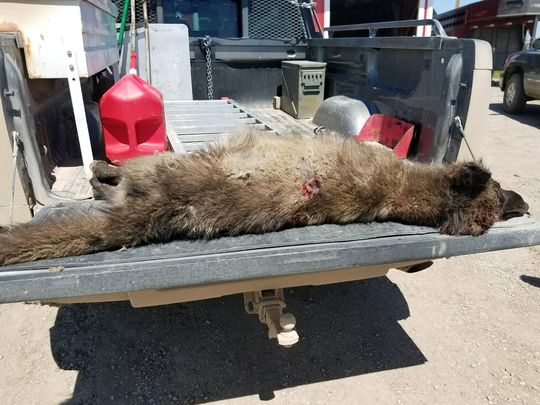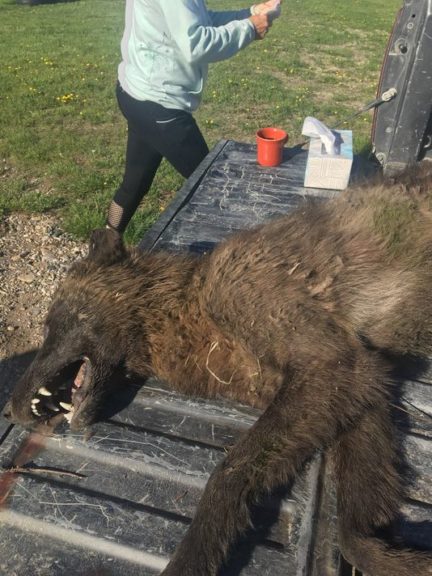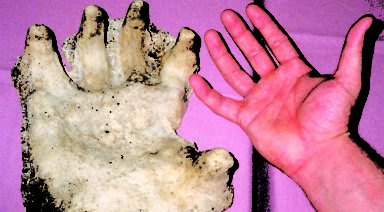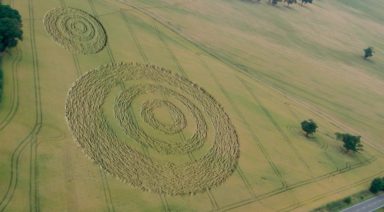Cryptozoologists Say Mysterious Canine Shot in Montana is Dogman

A few weeks ago, a rancher in Montana shot a wolf-like creature that was encroaching on his livestock. However, the creature remains unidentified by local authorities, leading some to speculate whether the cryptid may be the mythical dogman, or simply a wolf-dog hybrid.
Animal experts quickly noticed a number of anomalies that ruled out the animal as a purebred wolf, including paws that were too small, but with abnormally long claws; ears that were too big; canine teeth that were too short; and a strange fur coat.


According to Montana wildlife experts the animal was a non-lactating, female canid, believed to be some type of hybrid, though nothing conclusive could be recorded. The creature’s carcass was sent to a lab in Bozeman where tissue samples could be collected and later examined by the U.S. Fish and Wildlife Service in Ashland, Ore.

The report states that it should theoretically take a week to analyze the DNA contained in the samples, though the process of getting them to the appropriate lab could take up to a few months.
In the meantime, cryptozoologists believe the animal may finally be the specimen of the dogmen mentioned in a multitude of reports from credible sources.

Dating back to the late 1800s, accounts of upright walking canines have been reported across North America. Much like werewolves, dogmen have features that appear to be a mix of human, dog, and wolf. Witnesses often compare their size to that of a bear, reaching up to seven feet when standing erect – in comparison, gray wolves typically grow to around five feet in length.
The history of dogmen dates as far back as ancient Greece, where the creatures were given the name, Cynocephali. This alleged race was described in the writings of Marco Polo, who claimed to have come across an entire island of anthropomorphic canines, before supposedly initiating trade deals with them.
The cynocephali were prominently featured in works of art ranging from medieval pieces, to depictions of St. Christopher in the Eastern Orthodox Church. In Egypt, the god Anubis is consistently depicted as a human body with the head of a dog.
There have been a number of dogmen sightings reported over the past several years, in locations ranging from upstate New York, to Michigan, and Wisconsin. These sightings often occur in wooded regions throughout the northern U.S., though one of the more notorious locations for sightings is at Utah’s Skinwalker Ranch.
There are a few sites devoted to documenting alleged reports of dogmen with a plethora of convincing evidence that the phenomenon may be real.
Watch cryptozoologist Jack Cary, describe reports of dogmen encountered throughout North America:
The Ningen; Japanese Mermaid or Arctic Cryptid?

Cryptozoologists have been on the hunt for prehistoric maritime creatures like Nessie, Champy, and Tessie for decades, if not centuries. And a recent discovery of an 80 million-year-old shark species has likely fueled the interest of seekers still hoping to make a discovery. But there is one creature that has recently joined the ranks of these elusive cryptids, that remains unbeknownst to many: the Ningen.
The Ningen, A Japanese Mermaid?
What started off as an anecdote posted in a popular Japanese online forum, has now led to a multitude of sightings and alleged video evidence of an aquatic, humanoid fish, said to be roughly the size of a whale. The Ningen, which translates literally to ‘human,’ is a 20-30 meter-long, bulbous creature that was originally spotted by a Japanese research vessel, off the coast of Antarctica.

The creature is described as having a pale white, human-like figure with a torso, appendages, and fingers like ours, but with a mermaid-esque tail. It is also described as having minimal facial features with a small slitted mouth and two vacuous eyes.
The Ningen sea creature has been spotted primarily at night and in colder waters, leading some to believe that it has been hiding in the Arctic, beneath the ice. Some say that it may be a previously undiscovered species of albino ray, though the description of those who have encountered it is distinctly different.
There are several lackluster videos and questionable photos circulating the internet that purport to show the Ningen sea creature in its natural environment, but like most cryptids, none provide definitive proof. Though that hasn’t warranted an abandonment of the search for this amphibious wraith. Why would it? Scientists continue to discover multitudes of new marine species in the depths of the ocean on a regular basis.

Over the past decade, a number of hydrothermal vents have been discovered in the arctic depths. In these frigid waters, new and bizarre lifeforms, like the Yeti crab, have been discovered clustering around these vents. Some scientists have theorized that hydrothermal vents are where life originated on Earth in its nascent phases some 4.6 billion years ago.
While the Ningen sea creature remains an anecdotal tale among Japanese sailors and fisherman, there is rumor that the Japanese government is taking reports of the Ningen seriously, amassing a trove of putative accounts. It has also been rumored that photographic evidence of the Ningen was captured by the sailors of the original story, but the Japanese government destroyed the evidence so as not to draw attention and controversy.

Some have speculated that the Japanese government may be involved in a cover-up of the Ningen, due to a rare chemical compound it may produce that is either medicinal or highly venomous and able to be weaponized. Stories have been told of men in black threatening anyone who purports to have seen the Ningen sea creature or anyone attempting to expose its existence; though this is all unconfirmed hearsay. And while the story of the Ningen didn’t necessarily attract significant international attention, Mu Magazine,a Japanese publication specializing in the paranormal, created a serious buzz in Japan. Soon a plethora of stories, sightings, and alleged photographic evidence was made public
The original sighting by Japanese fishermen notes that the crew saw what they at first believed to be a foreign submarine, but upon further examination was clearly a living, breathing entity.
It’s unclear whether there are any cryptozoologists currently pursuing the Ningen, as its location would require a well-funded expedition with crew members knowledgeable of arctic territory. And though the Ningen cryptid might seem like another contrived hoax, told amongst sailors with too much free time, one mustn’t forget the maritime tale of the Kraken, that turned out to be based on a real creature: the giant squid.




































